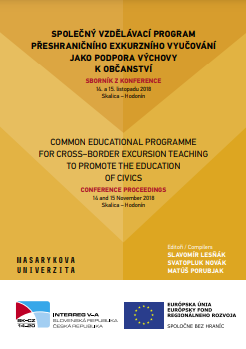Společné rysy lidové kultury na Podluží a na Záhoří na příkladu lidového oděvu
Common Features of Folk Culture in Podluží and Záhoří in the Example of Folk Clothing
Author(s): Alena Křížová
Subject(s): Customs / Folklore, Cultural Anthropology / Ethnology
Published by: Masarykova univerzita nakladatelství
Keywords: Lengthy; Záhoří; Croats; folk culture; folk costumes;
Summary/Abstract: Folk culture was formed in the past without regard to the state borders. For its appearance, the geographical and climatic conditions, the resulting source of livelihood, the economic ties to the city centres, and the way of life in its material, social and spiritual form were fundamental. For the ethnographic regions of Podluží in the south-eastern tip of Moravia and Záhoří in the south-western part of Slovakia, the lowland position and the same conditions for agriculture are characteristic. The historical circumstances of coexistence in the common state of the Austrian Monarchy contributed to their proximity, as well as being influenced by the Croat colonization that began in the mid-16th century, which also affected the appearance of folk clothing and was reflected primarily in the colour of individual components and their embroidery decorations. However, the development of folk costumes can only be observed systematically from the end of the 18th century, as written and pictorial sources and material documents are missing for the older period. By comparing the cut of clothing components in both regions, it can be concluded that male and female workwear exhibits the most common features, some differences in festive and ceremonial dresses are found especially in accessories. Nevertheless, the overall character of folk clothing in Podluží and Záhoří tells us about the cultural proximity of inhabitants on both sides of the border.
- Page Range: 154-161
- Page Count: 8
- Publication Year: 2019
- Language: Czech
- Content File-PDF

